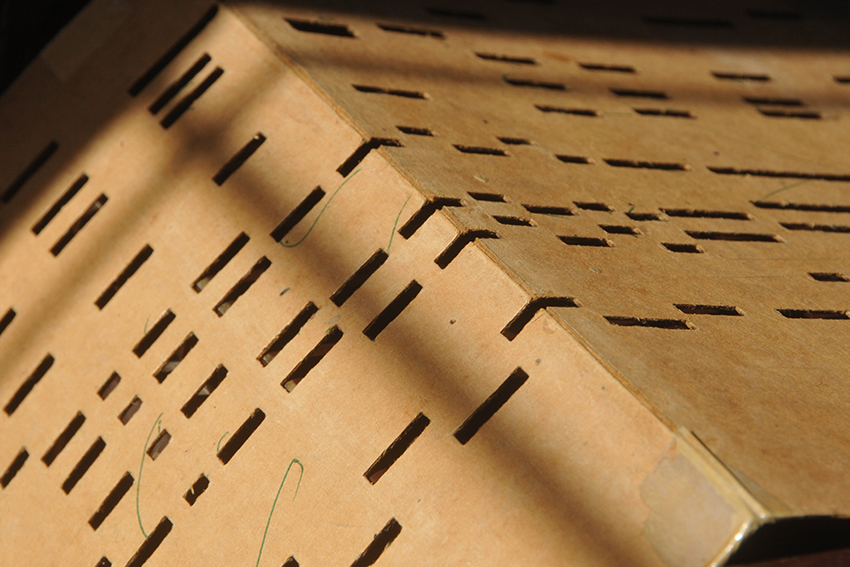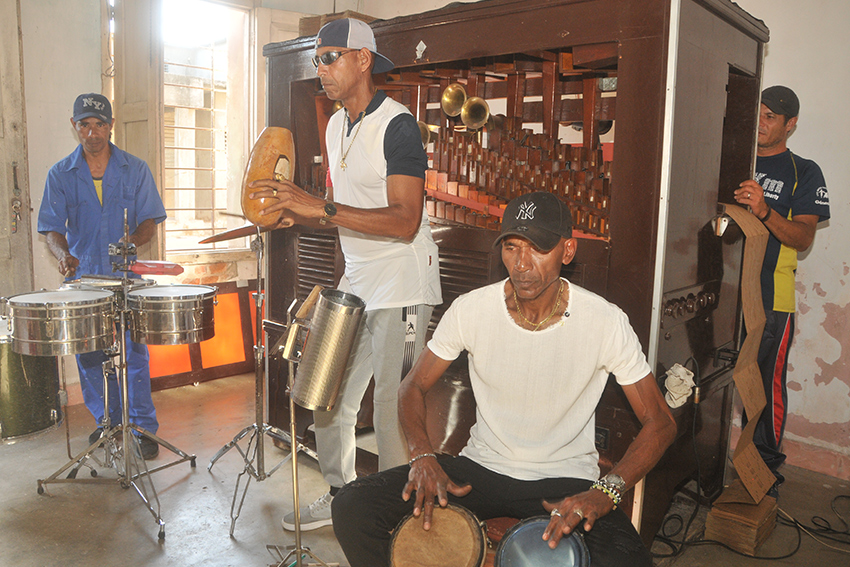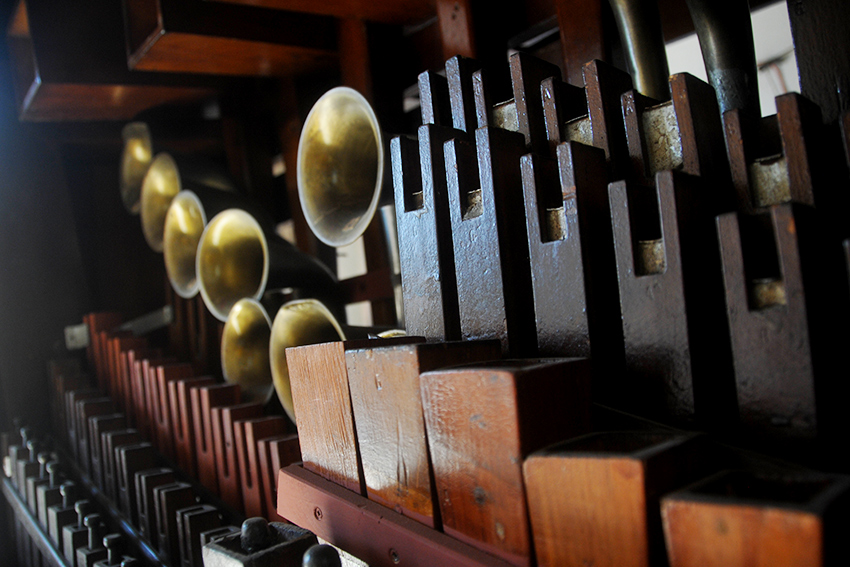
For a moment, I thought I was somewhere else. I heard music from far away and I imagined it could be like that in Vienna. It is beautiful to walk through the streets and be caught by those melodies and chords.
Las Tunas, Cuba.- It is not Vienna, but Las Tunas, between 24 de Febrero and Colón streets. It is Cuban music, ours, that of clave and bongo. My curiosity took me to the window and I recorded audio for my poet and musician friends in a beloved WhatsApp group to listen to. Tony Miranda (from Mexico) said: "Oh, what a beauty. Genuine village art... And how good it sounds". I believe it, it is such a Creole rhythm that imprints another spirit to the routine.
 It is the Estrella de Oriente Organ, founded by Joaquín Ochoa in 1925. There I was able to talk with musicians Yordaniel Montero (timbal), Jorge Luis Ochoa (minor percussion), and Carlos Ochoa (handle), who mentioned other members such as Ernesto Ochoa and his son, Alexander, recognized for their contributions to Cuban music from prestigious groups such as Caisimú.
It is the Estrella de Oriente Organ, founded by Joaquín Ochoa in 1925. There I was able to talk with musicians Yordaniel Montero (timbal), Jorge Luis Ochoa (minor percussion), and Carlos Ochoa (handle), who mentioned other members such as Ernesto Ochoa and his son, Alexander, recognized for their contributions to Cuban music from prestigious groups such as Caisimú.
They were very kind, they told me about events and places where they perform, but they should be more promoted. Observing the result of their dedication, I wanted to go deeper into the process. Puertopadrense musician Gerardo Corredera enlightens me: "You can't imagine how much effort goes into making a piece, a simple 3-minute piece, for a pneumatic organ."
"From the odyssey to find the cardboard and the glues to glue them together, to the arduous work of the one who marks the cardboard with the notes, which a third specialist punches with the machine invented by the organ builders themselves. Then, the tuning of the organ must be done with complete accuracy. Then comes the work of the musicians, who will listen to the sonorities many times before finishing the assembly, and so on, piece by piece. And so on, piece by piece. What do you think?."
Great, I answered.
Bewitched by the subject, I wanted to know more about it. Surfing the Internet, I found the name Star of the Orient Organ in a tourist promotion. Then I insisted in my search and found an article by journalist Juan Morales Agüero, who in an excerpt says: "This charming and fabulous factory of making 'ground music' (...) became so popular in the Creole parties that it even changed its vocation of 'soloist' to be accompanied by timbal, claves, tumbadora, and guayo. It is like a small orchestra because it reproduces the sounds of other instruments, mainly wind instruments."
It is said that the first of its kind arrived in Cienfuegos from France in 1885. Other studies say that ours is closer to the one founded in Manzanillo. The truth is that the Oriental Organ is still cultivated in this area of the country by young musicians, a guarantee for the tradition to endure, despite the material needs that the creation must face, as Alexander points out.
The joy on their faces reflects how much they enjoy it, and how much they honor the Ochoa surname, heir to a musical tradition. For my part, I join Tony Miranda's call, when he emotionally says: "May this music not die."







